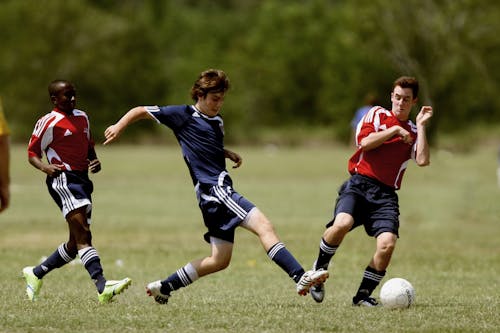Early Formations and the First Signs of Strategy
When the foundations of modern soccer were laid in the 19th century, tactics were virtually non-existent. The 2-3-5 formation—known as the “Pyramid”—dominated the landscape. Teams focused on overwhelming opponents with sheer numbers in attack, often ignoring defensive structure. Matches were wild, open affairs, relying heavily on individual brilliance rather than coordination or collective shape.
In the 1920s and 1930s, a shift began. Italy’s “Metodo” system introduced more balance between defense and attack. Arsenal’s Herbert Chapman created the WM formation (3-2-2-3), a tactical breakthrough that gave teams a better defensive foundation. For the first time, formations were designed with specific responsibilities and structure in mind, signaling the start of a more cerebral approach to the game.

From Defensive Mastery to Tactical Freedom
By the 1960s, Italian clubs and the national team began to develop Catenaccio, a system centered on defense. It relied on a sweeper—or libero—who played behind the main defensive line and cleaned up danger. The focus was on tight marking, deep defending, and counter-attacking. It wasn’t flashy, but it was incredibly effective, especially in knockout competitions.
Just a decade later, the Dutch would offer a radically different philosophy. Total Football, perfected by Rinus Michels and Johan Cruyff, turned rigid systems on their heads. Players rotated positions seamlessly, and everyone on the field was expected to understand every role. A defender could become a midfielder, a forward could drop deep—fluidity was the core principle. The Dutch played fast, intelligent, high-pressing football that would influence countless teams across generations.
Compactness and the Modern Framework
In the late 1980s and early 1990s, Arrigo Sacchi brought tactical rigor to a new level. His AC Milan side used a 4-4-2 formation that functioned as a compact, synchronized unit. Sacchi introduced zonal marking and coordinated pressing, where the whole team moved in response to the ball rather than marking man-to-man.
This approach influenced a generation of coaches. The focus was no longer just on formations but on spacing, timing, and cohesion. Teams began defending as a unit, attacking with purpose, and recognizing the importance of transitions—how a team moved from defense to attack and vice versa.
Flexibility in the 2000s
By the early 2000s, tactics became increasingly flexible. Managers like José Mourinho at Chelsea used a disciplined 4-3-3 system with a strong emphasis on counter-attacks and defensive solidity. At the same time, Arsène Wenger’s Arsenal employed a more fluid 4-4-2, focused on quick passing and off-the-ball movement.
Players began to blur positional boundaries. The concept of a “holding midfielder” or a “false nine” became more common. Tactical versatility became a necessity, not a luxury.
Barcelona, Guardiola, and Tactical Control
The late 2000s saw the rise of Pep Guardiola’s Barcelona—a team that set new standards for control and precision. Using a 4-3-3 that often transitioned into a 3-4-3 in possession, Guardiola introduced positional play (juego de posición), where players occupied specific zones to create passing triangles and numerical superiority.
Lionel Messi’s role as a false nine disrupted defensive lines. The focus on short passing, possession, and high pressing created a model that many clubs tried to imitate. Tiki-taka wasn’t just about keeping the ball—it was about dominating the game through structure and space.
Modern Complexity and Tactical Hybrids
Today, tactical systems are more complex and dynamic than ever. Managers like Jürgen Klopp, Thomas Tuchel, and Julian Nagelsmann use detailed pressing triggers, hybrid formations, and advanced analytics to shape their teams. A team may defend in a 4-4-2, build up in a 3-2-5, and attack in a 2-3-5—all in one match.
Full-backs invert into midfield, wingers tuck inside to form central overloads, and even goalkeepers are expected to contribute to the buildup. Soccer has become a high-speed chess match, where adaptability is as important as talent.

The Role of the Modern Player
Modern tactics demand intelligent, versatile players. Specialists are rare; instead, managers look for footballers who can operate in multiple roles. Midfielders like Joshua Kimmich and Jude Bellingham, full-backs like João Cancelo, and even goalkeepers like Ederson are examples of this evolution. Tactical understanding and decision-making are now just as vital as physical attributes.
A Continual Transformation
From the chaotic beginnings of the 2-3-5 to today’s shapeshifting formations and pressing structures, the tactical journey of soccer reflects a constant desire for improvement and innovation. Each era borrowed from the last while adding new ideas and systems. As technology and data continue to evolve, so too will the strategies that define the game.
Yet at its core, soccer remains a battle for space, time, and rhythm—where the smallest decisions can make the biggest difference.





